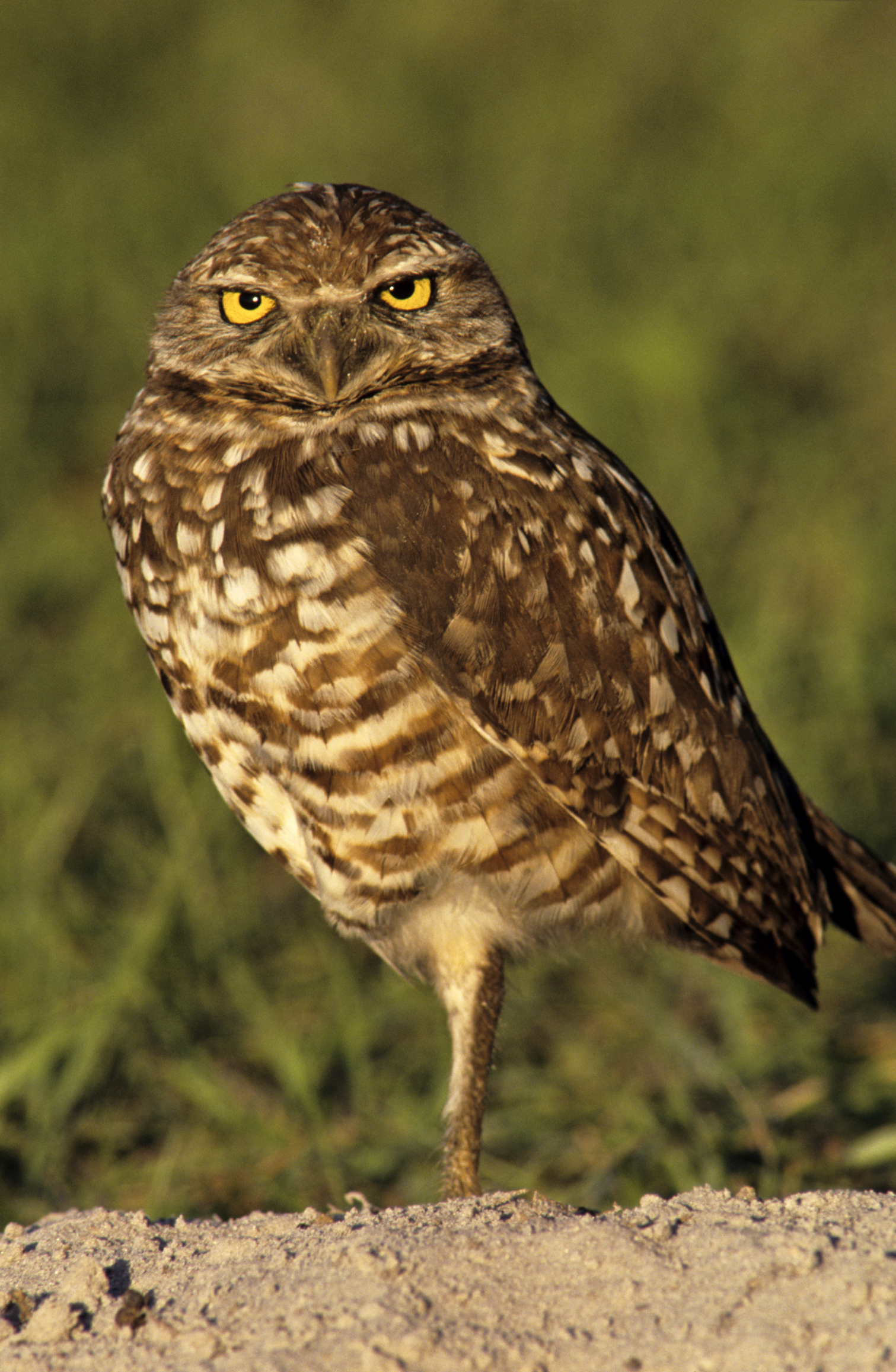Owl is a type of bird that usually lives alone and hunts for food at night. Owls are birds of prey, or birds that kill and eat animals. Yet scientists do not consider them closely related to other birds of prey, such as falcons or hawks. Owls have long benefited people by eating mice, rats, and other animals harmful to crops. Loading the player...
Owls
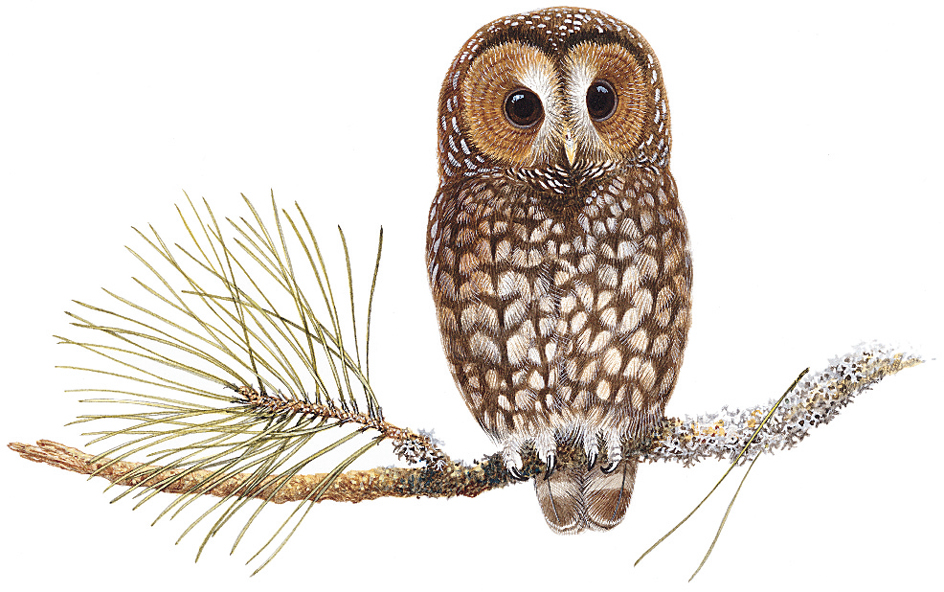
Scientists have identified about 200 species (kinds) of owls. These birds live throughout much of the world, including many oceanic islands. The smallest owl, the elf owl, inhabits the southwestern United States and western Mexico. It grows about 6 inches (15 centimeters) in length. The largest species, the Eurasian eagle-owl, grows about 28 inches (70 centimeters) long. It lives in Europe, Asia, and parts of northern Africa. In most owl species, females grow larger than males.
Owls have long symbolized wisdom. The ancient Greeks believed the owl was sacred to Athena, their goddess of wisdom. Actually, blue jays, crows, and many other birds are probably smarter than owls.
Appearance.
Every owl species has a large, broad head with a saucer-shaped ruff of feathers around the eyes. This ruff, called the facial disk, reflects sound to the owl’s ear openings. In some species, the facial disk and the ear openings are large. The eyes of most owls are enlarged and directed forward, unlike the eyes of most birds. For this reason, owls can watch an object with both eyes at the same time. Thus, they have binocular vision, as have people. But unlike people, owls cannot move their eyes in their sockets. Instead, they must move their heads to watch moving objects. Owls have transparent inner eyelids that close over the eyes when the birds attack prey. These eyelids keep the eyes clean and moist and protect the eyes from getting scratched. 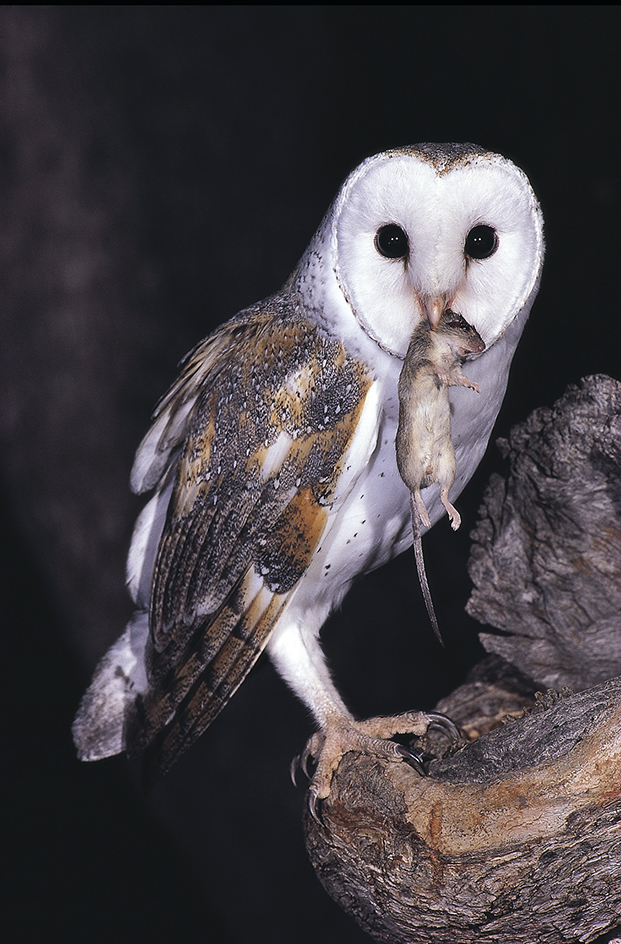
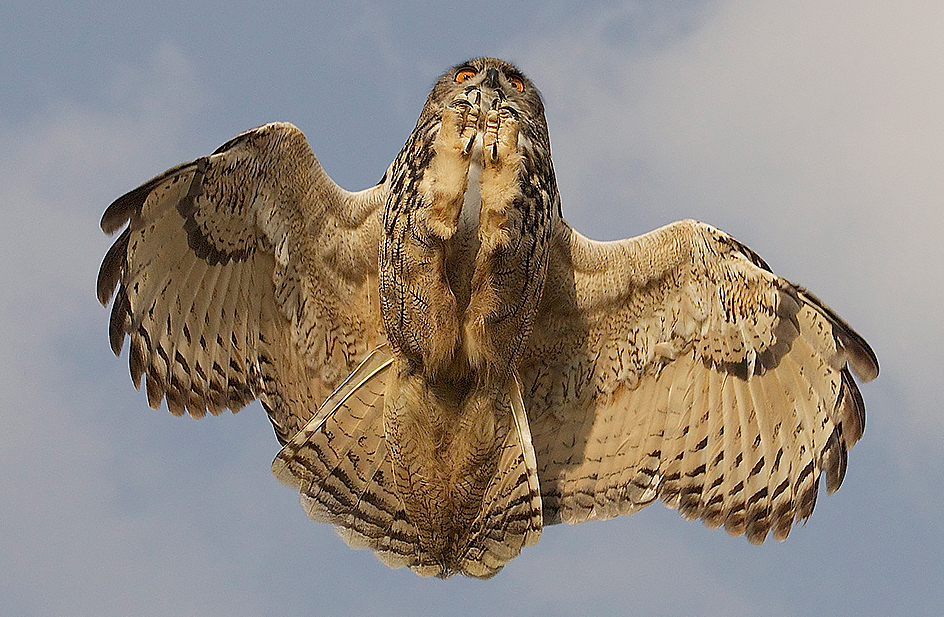
Way of life.
Owls generally hunt at night, though a few species hunt primarily during the day. All owls have bodies well adapted for hunting. They can fly fairly fast, and their soft feathers make little noise when in flight. Night hunters rely not only on their excellent night vision, but also on their hearing to catch prey. The birds can locate and catch mice, voles, and other small creatures in total darkness by listening to the soft noises the animals make on the ground. Most owls search for prey from a perch. Some types search while flying back and forth over fields or marshes. Once the owl spots prey, it quickly and quietly swoops down to make the catch. Occasionally, some owls may pick up animals that have been recently injured along highways. 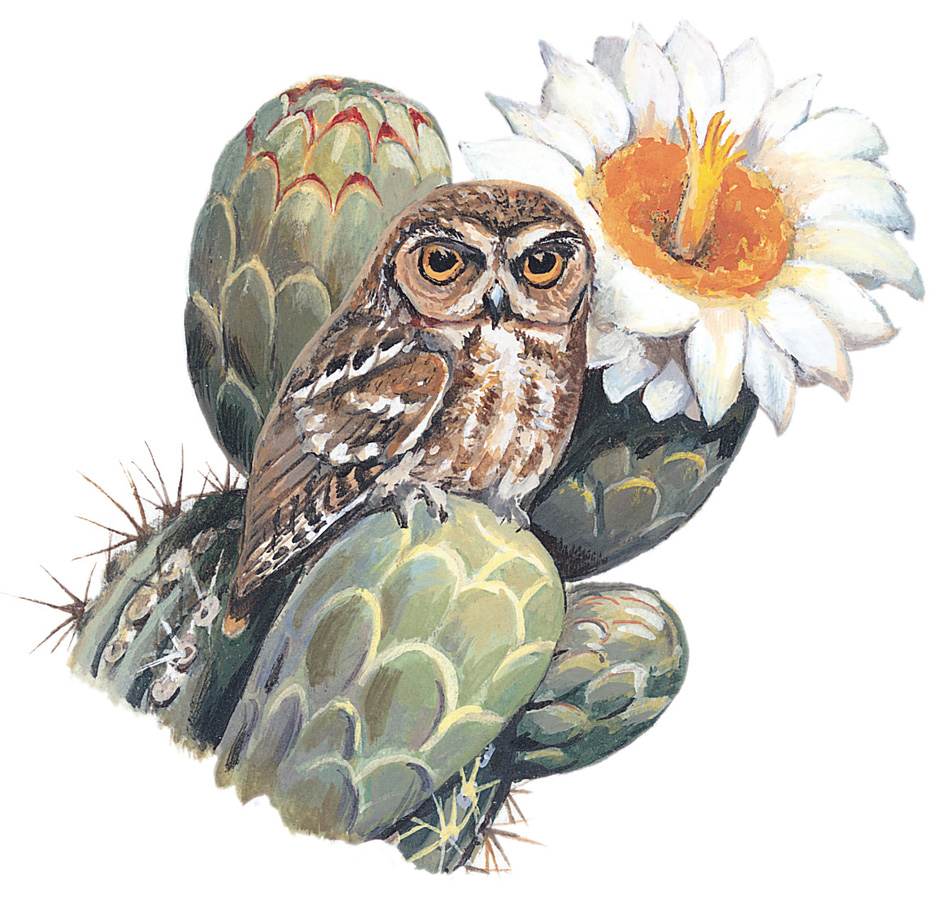
Elf owl
Owls eat mostly small mammals. But they may also capture birds, reptiles, fish, crayfish, worms, and insects. The biggest owls can seize prey the size of geese or large hares. Some owls feed on many different kinds of prey. Others specialize only in certain types, such as fish from shallow waters. Like hawks, owls tear large prey into pieces when they eat it. But if the prey is small enough, they swallow it whole. They later cough up pellets of bones, fur, scales, and feathers, which they cannot digest. These pellets can be found under their nests and roosting places.
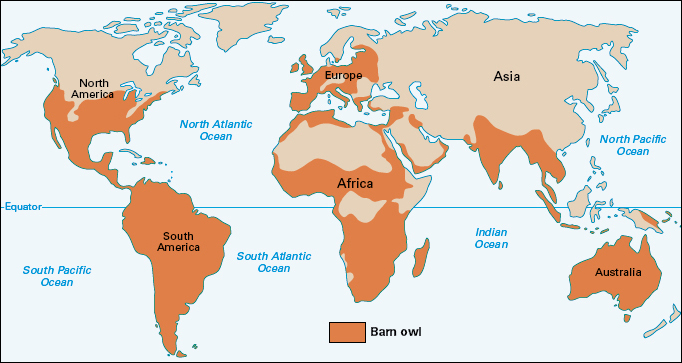
Owls rank among the most useful birds to farmers. They eat many animals that may damage crops, including mice, rabbits, rats, voles, and insects. They seldom take poultry, which are usually asleep and inside when owls come out to hunt.
Owls do not build their own nests. Instead, many use the old nests of such birds as hawks or crows. Others may use cavities in trees, ledges in caves or cliffs, scraped-out holes in the ground, or underground burrows. Some owls nest in such structures as barns, silos, or belfries. Most female owls lay 2 or 4 eggs, but some lay as few as 1 or as many as 12. The eggs are nearly round and mostly white.
In most owl species, the female incubates the eggs and keeps the nest warm. The male provides food for the female and young. After hatching, the young stay in the nest for four to five weeks. Owl parents fiercely protect their young from intruders, usually with their strong talons. Young owls remain dependent on the parents for several weeks after leaving the nest. During this time, the young must learn to fly well and to hunt for themselves.
Important owls.
Scientists divide owls into two families. One family consists of the barn owl and its relatives. The second, and much larger, family contains all other owl species. Biologists refer to birds from the second family as typical owls or true owls.
The barn owl lives on all continents except Antarctica. It measures about 16 inches (41 centimeters) long. Sometimes called the monkey-faced owl, this species has a heart-shaped face, beady eyes, and amusing actions that seem like those of a monkey. Barn owls vary in color, depending on where they live. They usually nest in barns or other places built by people. They may also nest in caves or hollow trees. Barn owls often hunt in open fields. Their call consists of a long screech.
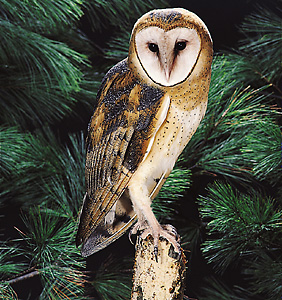
Another member of the barn owl family, the greater sooty-owl, lives in dense forests of New Guinea and eastern Australia. This rare species has largely blackish-brown plumage with white markings. It grows to about 20 inches (50 centimeters) in length. Its call consists of a shriek that descends in pitch and lasts about 2 seconds.
Typical owls account for most owl species. The great horned owl lives throughout North America and in parts of South America. It inhabits a wide variety of forests and open lands. This large owl grows about 22 inches (56 centimeters) long. Like the barn owl, it varies in color depending on location. The great horned owl gets its name from the hornlike tufts of feathers on its head. Its call features a series of hoots—whoo, hoo-hoo, whoo, whoo.
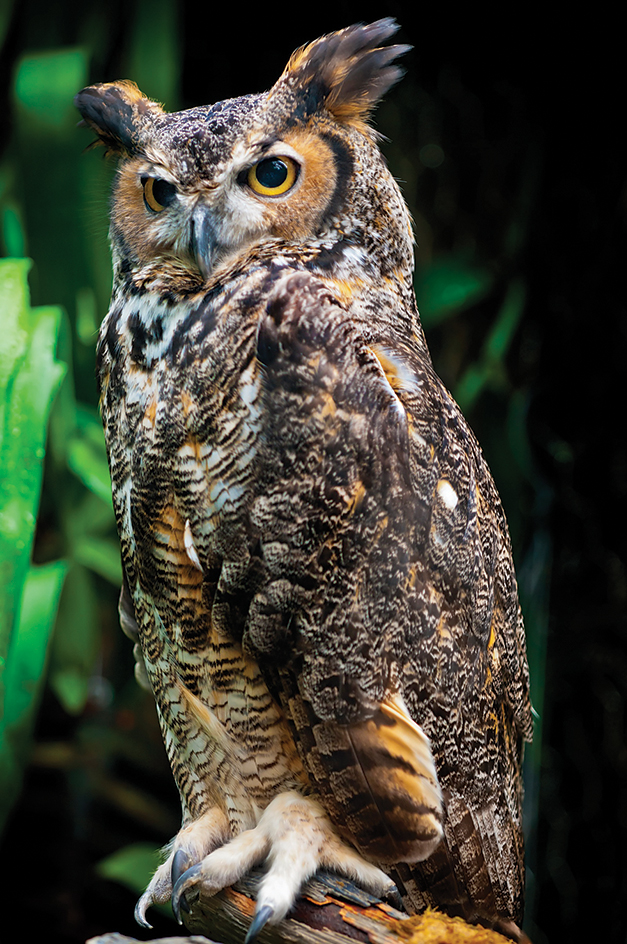
The Eurasian eagle-owl, the largest owl species, is a close relative of the great horned owl. It occurs throughout much of Europe and Asia and in parts of northern Africa. This species lives in a variety of habitats, but it often prefers woodlands. It has mostly brownish coloring with black markings. It also has earlike tufts of feathers on its head. The bird’s call repeats a two-note hoot that descends in pitch and sounds like boo-oh.
Screech-owls make up a large group of small owls that live throughout the Americas. They measure about 7 to 8 inches (18 to 20 centimeters) long and have ear tufts. Most screech-owls bear from four to six young. The eastern screech-owl lives in woodlands east of the Rocky Mountains, from northern Canada to Mexico. Eastern screech-owls may have reddish or grayish coloring. They like to spend the day in hollow trees and to nest there. The birds often use trees along city streets and in parks. At night, they give trembling calls and hollow whistles that run up and down the musical scale.
The barred owl lives in woodlands throughout much of North America. It grows a bit smaller than the great horned owl and has no ear tufts. Brownish-gray bars run horizontally across its upper breast and vertically across its lower breast and belly. The barred owl gives a series of loud hoots, the last one ending with an ah: whoo, whoo, whoo, whoo—whoo, whoo, whoo, whoo-ah.
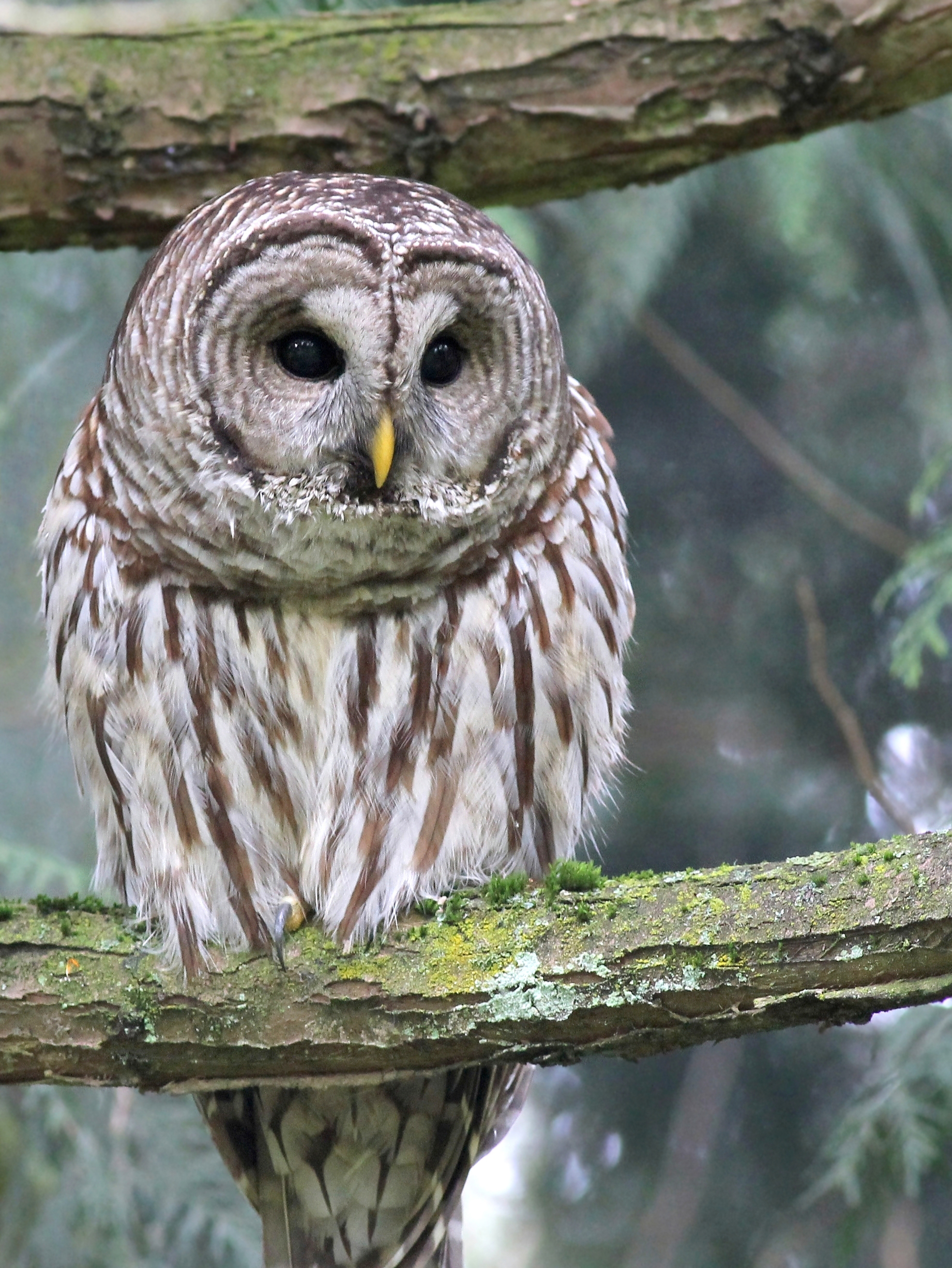
The spotted owl inhabits forested mountains of the western United States and Mexico. It measures about 18 inches (46 centimeters) long and has dark brown plumage with white spots. This owl has become threatened in some areas because of habitat destruction and because a competing species, the barred owl, has gradually invaded its range. The spotted owl’s call features several loud hoots: whoo, woo-hoo, hoo.
The great grey owl lives mostly in northern forests of North America, Europe, and Asia. This large owl grows about 27 inches (69 centimeters) long. Despite its size, it generally feeds on small prey. Its call consists of booming hoots that descend in pitch towards the end: Whoo-whoo-whoo-whoo-whoo-whoo-whoo.
The large snowy owl breeds in the tundras (cold treeless plains) of the Arctic. Adults measure about 23 inches (58 centimeters) long and have mostly white plumage with brown markings. Adult females have more brown markings than do adult males. The snowy owl may migrate south for the winter. Its call features several rough notes and sounds somewhat like a dog’s bark.
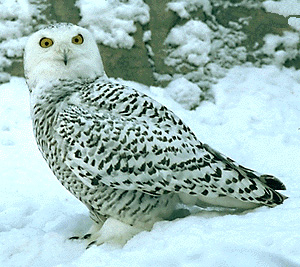
Fishing-owls are powerful birds with large, strong bills. They have generally unfeathered legs and scaly feet. They use their feet to grip fish, their main prey. All fishing-owl species live in Africa south of the Sahara. They inhabit forested areas near rivers and lakes. The most widespread species, the Pel’s fishing-owl, grows about 24 inches (60 centimeters) long and has brownish plumage. It gives a loud two-part call: hoo, hoo-hoo-hoo.
The long-eared owl lives throughout much of North America, Europe, and Asia, and in parts of northern Africa. It nests in the forests but often hunts in meadows and fields. This species grows to about 15 inches (38 centimeters) in length. Its long ear tufts occur close together, and it has largely buff (dull yellow) plumage with vertical brown streaks. Its call consists of several repeated notes, each of which sound like whoop.
The short-eared owl and burrowing owl are among the few owls that hunt mostly during the day. The short-eared owl grows to about the size of a long-eared owl. It also has similar, though slightly darker, coloring. Its short ear tufts are hardly noticeable. Short-eared owls occur in many areas, including northern parts of North America, Europe, and Asia; southern South America; and many oceanic islands. They nest on the ground, often in prairies, meadows, and marshes. Their rapid hooting call first goes higher in pitch and then lower.
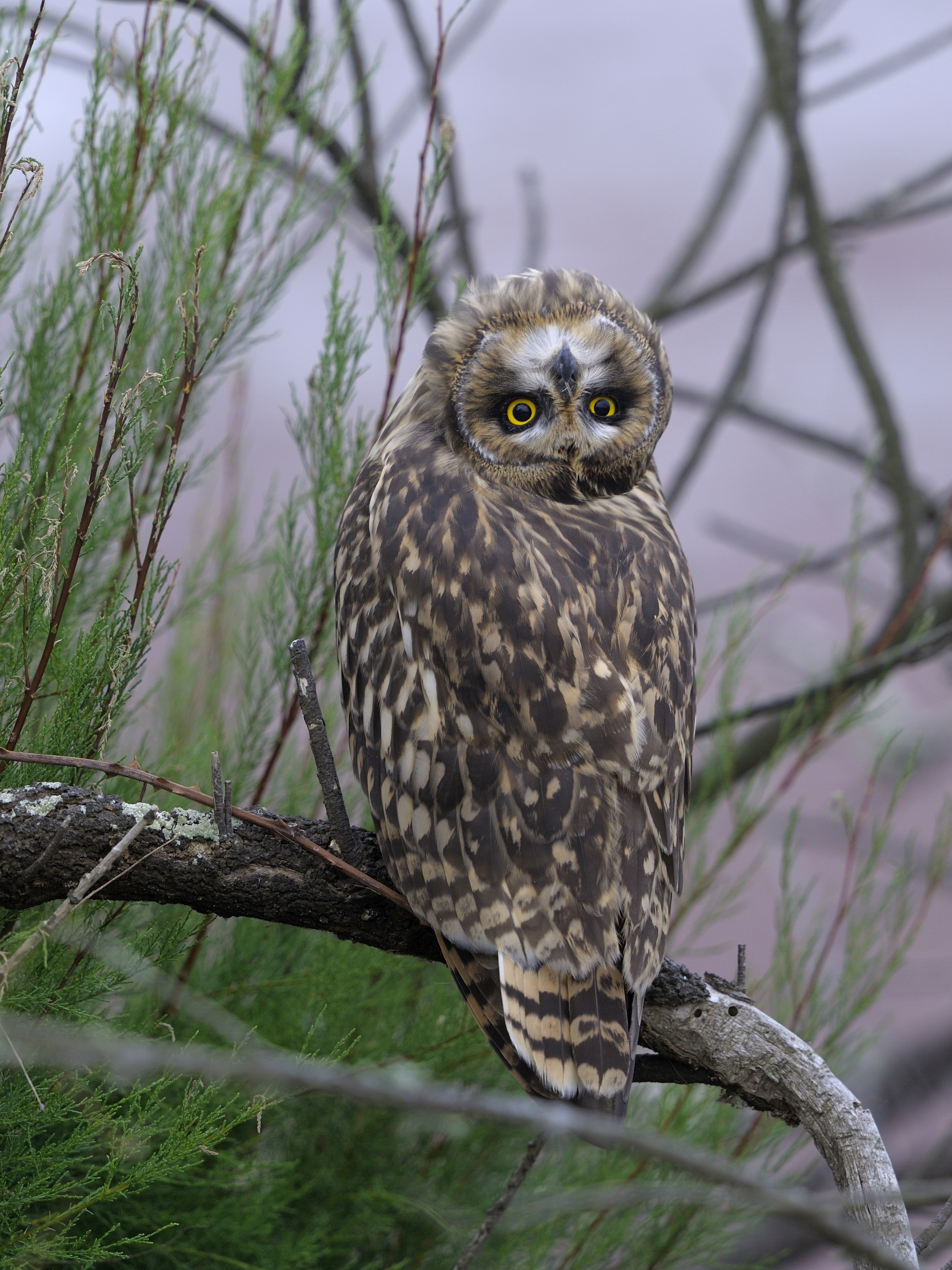
The burrowing owl typically lives in deserts and grasslands of the Americas. It has brownish plumage and grows about 9 inches (23 centimeters) long. It often nests in burrows that it steals from such mammals as prairie dogs. The owl’s long legs help it walk about easily. Its song repeats the sounds coo-whooh.
